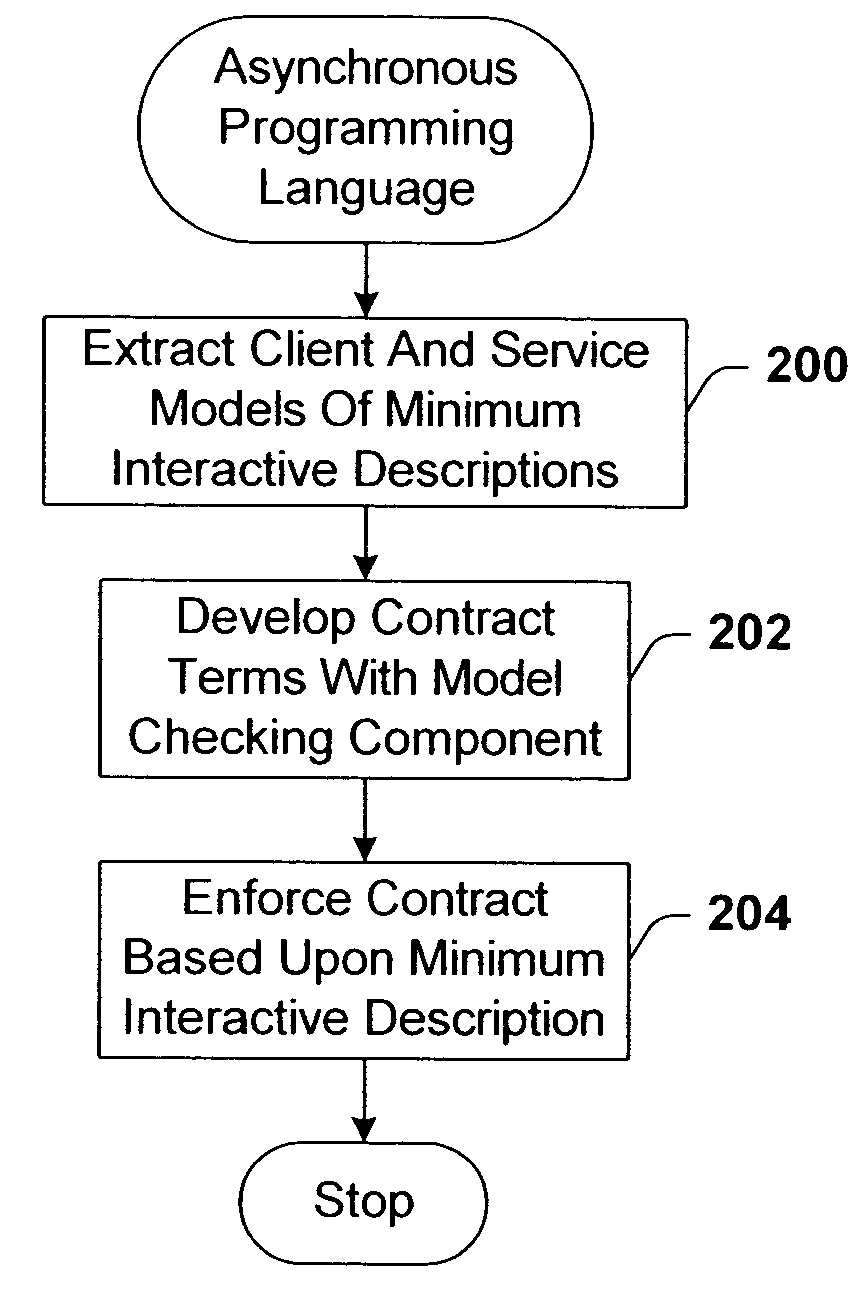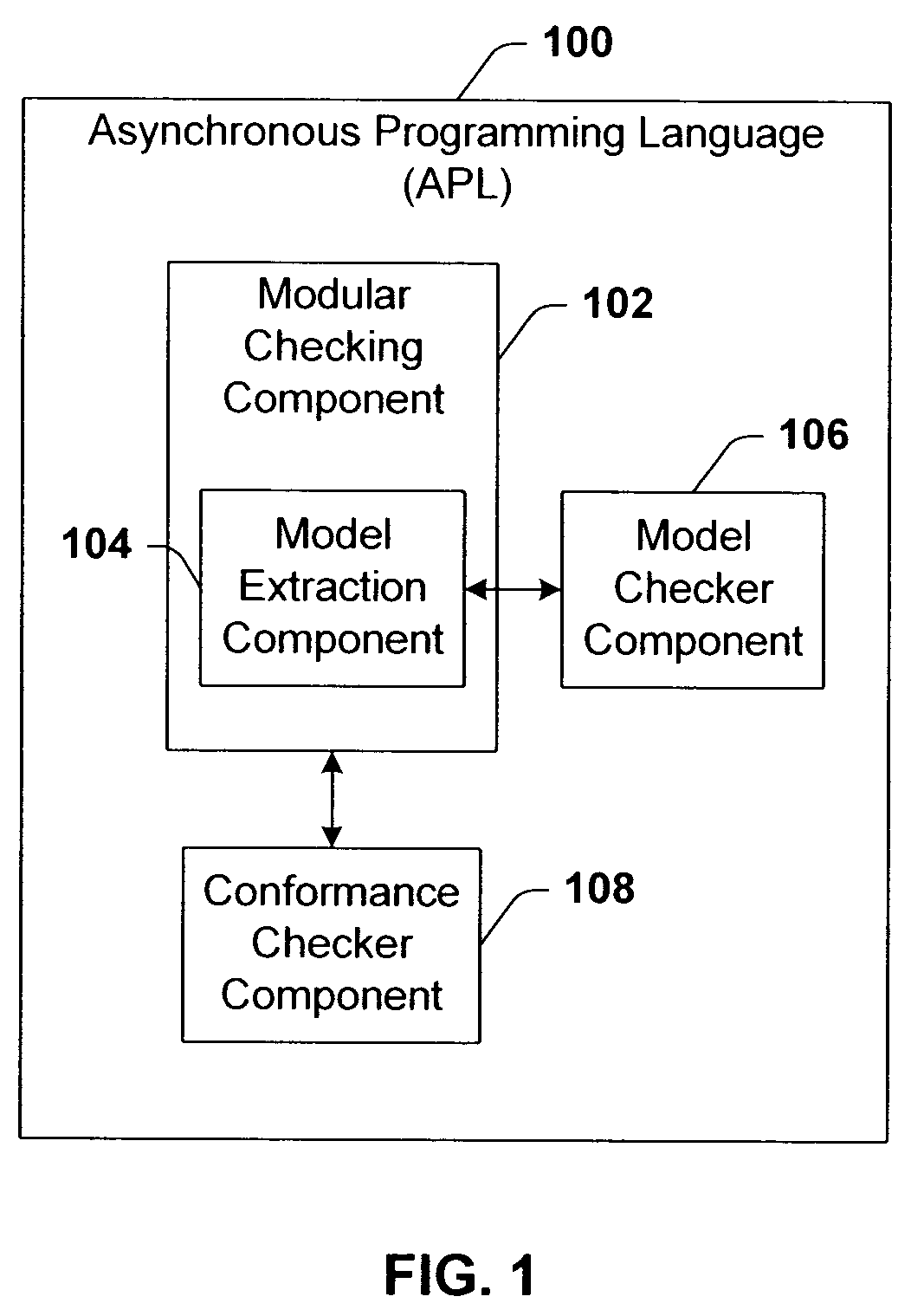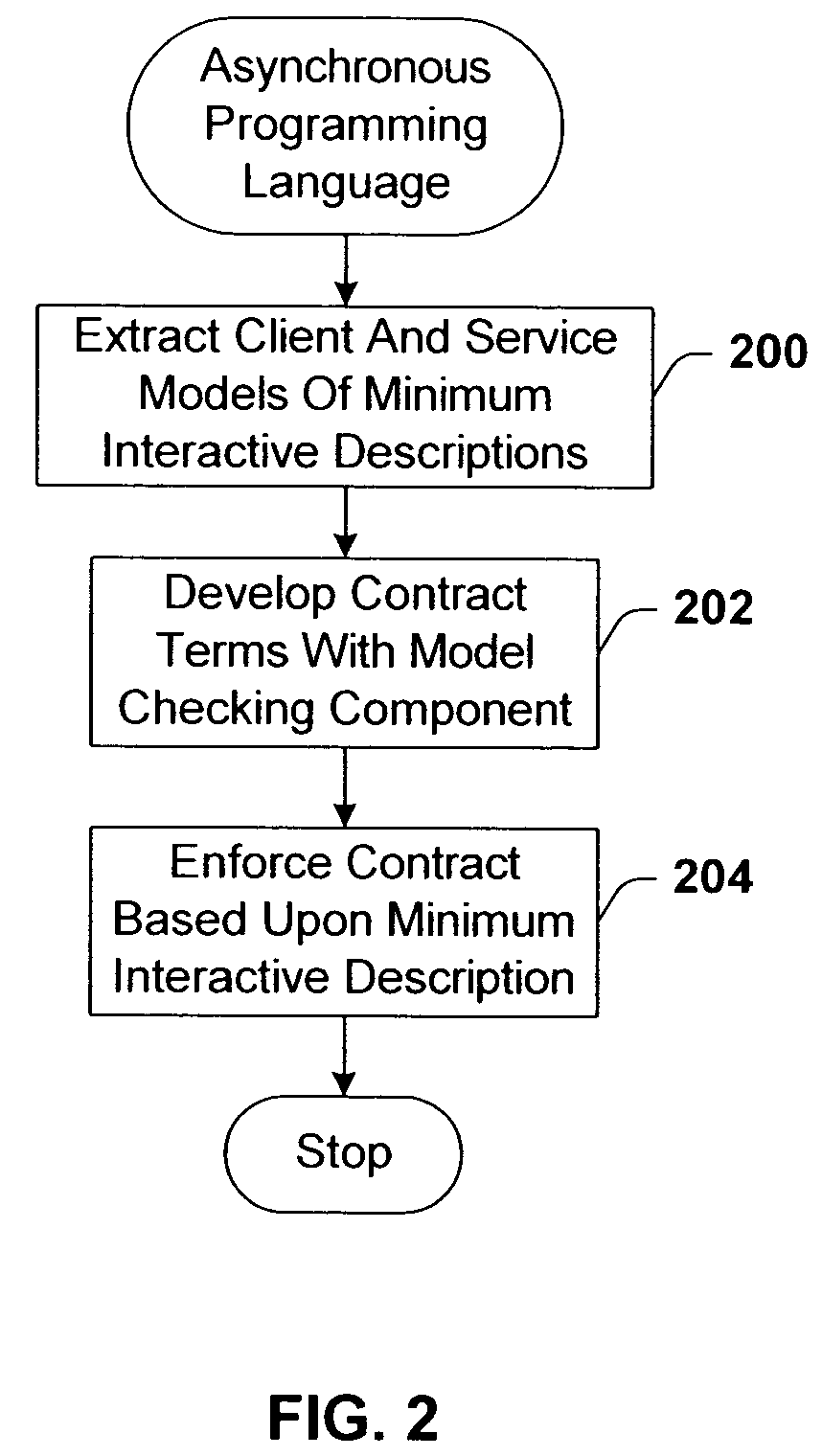Contracts and futures in an asynchronous programming language
a programming language and contract technology, applied in programming languages/paradigms, multi-programming arrangements, instruments, etc., can solve the problems of increasing asynchronous computation, lack of support, and making the difficult task of programming even harder
- Summary
- Abstract
- Description
- Claims
- Application Information
AI Technical Summary
Benefits of technology
Problems solved by technology
Method used
Image
Examples
example 1
Sample Airline Reservation System
[0059]
[WebService]public class Airline[contract (Query? -> ( Buy? -> Cancel? + Cancel? ))* ][contract correlation Cid]{ [contract {throw AirlineException # return} ] future Info Query(Cid PO,string itinerary); [contract {throw AirlineException # return} ] future Info Buy(Cid PO); [contract {throw AirlineException # return} ] future Info Cancel(Cid PO);}
[0060]The code exposes three entry points: Query, Buy and Cancel. A client must first call Query to check availability of a seat. Then it can either buy or cancel the reservation by calling Buy or Cancel, respectively. Furthermore, after purchasing the seat, the client of the airline is still allowed to cancel. Once canceled, the client can possibly start another query. The input constraint (Query?→(Buy?→Cancel?+Cancel?))* succinctly prescribes these sequencing constraints. The input constraint only specifies the set of all allowable sequences of method invocations, and does not force the client ...
example 2
Sample Airline-Rental Client
[0062]
Class TravelAgent{private Airline myAir;private Rental myRental;private CId myPO;void doAirlineAndRentalREservation( ) { myAir = new Airline( ); myRental = new Rental( ); myPO = new Cid( ); transaction(myAir correlate myPO, myCar correlate myPO){ String itinerary = User.getItinerary( ); Future Info fAir = async myAir.Query(myPO,itinerary); Future Info fRental = async myRental.Query(myPO,itinerary); join { fAir & fRental -> buyBoth( ); + !fAir -> cancelBoth( ); + !fRental -> cancelBoth( ); } }}
[0063]The transaction directive is used to delimit the scope and specify correlation variables for the conversation. In this case, myPO is used as correlation for both the services. Note how the join construct is used to wait for both the futures fAir and fRental to complete.
[0064]The following Example 3 shows a buggy client that will be used as an example herein.
example 3
Buggy Client Code
[0065]
Class SimpleClient{private Airline myAir;private CId myPO;void startReservation( ) { myAir = new Airline( ); myPO = new Cid( ); / / now interact with myAir using / / myPO as the correlation id transaction (myAir correlate myPO) { String itinerary = User.getItinerary( ); Future Info fInfo = async myAir.Query(myPO,itinerary); async myAir.Buy(myPO); }}
[0066]Although the client calls Query before calling Buy, the calls are asynchronous, so Buy can potentially be invoked before the call to Query completes. A correct client should synchronize on fInfo before calling Buy.
[0067]Conformance Checking
[0068]The disclosed programming language compiler checks if components of the program conform with the contracts that are specified on the interfaces. The checker separately checks for two kinds of conformance: (1) client conformance, which means that a client (a program using a service interface with contracts) obeys the contract of the service it uses, and ...
PUM
 Login to View More
Login to View More Abstract
Description
Claims
Application Information
 Login to View More
Login to View More - R&D
- Intellectual Property
- Life Sciences
- Materials
- Tech Scout
- Unparalleled Data Quality
- Higher Quality Content
- 60% Fewer Hallucinations
Browse by: Latest US Patents, China's latest patents, Technical Efficacy Thesaurus, Application Domain, Technology Topic, Popular Technical Reports.
© 2025 PatSnap. All rights reserved.Legal|Privacy policy|Modern Slavery Act Transparency Statement|Sitemap|About US| Contact US: help@patsnap.com



